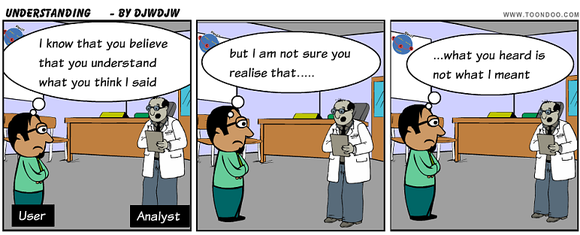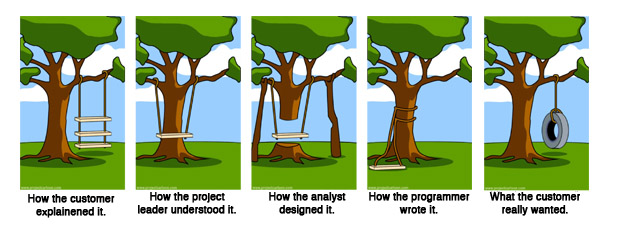Introduction
Why don’t projects progress as planned? There are a gazillion reasons! However, I have found a common thread for reasons within our control – communication and expectations. By being aware of the relationships between entities and communication patterns one can identify and address the pitfalls.
Consider a hypothetical scenario, where a supplier is commissioned to do a project for a customer.
Who is a customer? A customer receives the outcome of the project, or a product or service and authorizes it’s payment.
Who is a supplier? A supplier executes the project, provides the product or service and receives payment for it.
One may ask: “What about all the other people in the deal / transaction?” They are typically agents, brokers, sub-contractors or regulatory authorities who may or may not have their sub- customer/supplier relationships within the overall customer/supplier relationship. It is not sufficient to only find out about all the entities involved, it is necessary to understand the relationships between the entities in terms of authority, accountability and how the money flows.
One may also ask: “What about the situation where a customer receives service from a provider who is paid by another party.” For example, doctors who provide healthcare to us mere mortals, and get paid by the state. These relationships are problematic because the provider is not rewarded according to the (quality of) service provided. This encourages the provider to develop split priorities, focusing on the relationship with the paying entity rather than the service being provided or customer satisfaction. In this situation, where possible, try to change the nature of the relationship to a simple customer/supplier relationship, otherwise, tread cautiously alert to the pitfalls.
A Customer/Supplier Communication Model
I have found it interesting to model supplier and customer interactions based on their subject knowledge. That is: How competent is the supplier, and how well does the customer know what they want?
| Customer does not know what they want | Customer knows what they want | |
|---|---|---|
| Competent Supplier | * Supplier to Customer Communications * Customer agrees to everything that is said and to nothing that is delivered | * Two way communications * Difficult negotiations |
| Incompetent Supplier | * Very little specific communication in either direction * Much hand waving and rhetoric | * Customer to Supplier communications * Supplier agrees to everything and guarantees nothing |
Observed Outcomes
- Incompetent supplier and customer that does not know what they want:
Results in a project that flounders and gets abandoned, wasting time and money. - Competent supplier and customer that does not know what they want:
Project progresses slowly with many changes, costs overruns and missed deadlines. This results in a product that does not satisfy the customer, nor reflect the capabilities of the supplier. - Incompetent supplier and customer that knows what they want:
Has the potential of being the most acrimonious of all relationships where the customer walks away from the deal without paying the supplier or ends up suing the supplier. - Competent supplier and customer that knows what they want:
Results in the project with the most chance of success. However, it may not look that way at the outset, with much discussion to develop understanding and communication.
Conclusion
Understanding relationships between entities, observing the communication and clarifying expectations between a customer and supplier on a project helps to discern potential issues.


